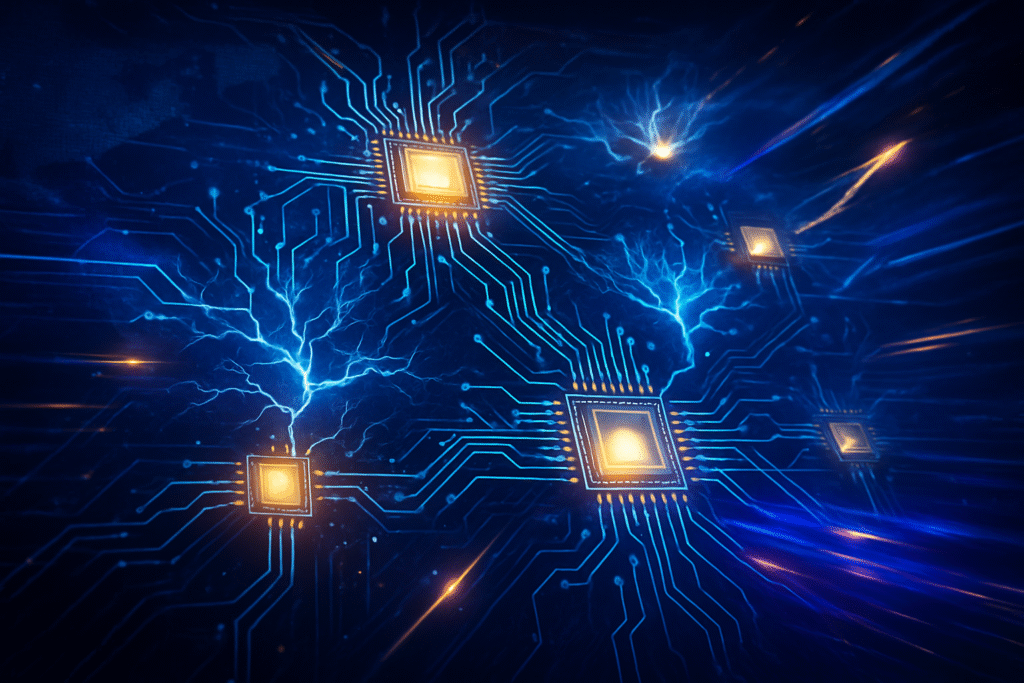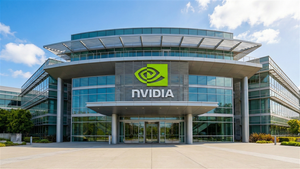
The artificial intelligence (AI) boom has ignited an unprecedented surge in demand for High-Performance Computing (HPC) chips, fundamentally reshaping the semiconductor industry and driving a new era of technological innovation. This insatiable appetite for computational power, propelled by the increasing complexity of AI models, particularly large language models (LLMs) and generative AI, is rapidly transforming market dynamics, driving innovation, and exposing critical vulnerabilities within global supply chains. The AI chip market, valued at approximately USD 123.16 billion in 2024, is projected to soar to USD 311.58 billion by 2029, a staggering compound annual growth rate (CAGR) of 24.4%. This surge is primarily fueled by the extensive deployment of AI servers and a growing emphasis on real-time data processing across various sectors.
Data centers have emerged as the primary engines of this demand, racing to build AI infrastructure for cloud and HPC at an unprecedented scale. This relentless need for AI data center chips is displacing traditional demand drivers like smartphones and PCs. The market for HPC AI chips is highly concentrated, with a few major players dominating, most notably NVIDIA (NASDAQ: NVDA), which holds an estimated 70% market share in 2023. However, competitors like Advanced Micro Devices (NASDAQ: AMD) and Intel (NASDAQ: INTC) are making substantial investments to vie for market share, intensifying the competitive landscape. Foundries like Taiwan Semiconductor Manufacturing Company (NYSE: TSM) are direct beneficiaries, reporting record profits driven by this booming demand.
The Cutting Edge: Technical Prowess of Next-Gen AI Accelerators
The AI boom, particularly the rapid advancements in generative AI and large language models (LLMs), is fundamentally driven by a new generation of high-performance computing (HPC) chips. These specialized accelerators, designed for massive parallel processing and high-bandwidth memory access, offer orders of magnitude greater performance and efficiency than general-purpose CPUs for AI workloads.
NVIDIA's H100 Tensor Core GPU, based on the Hopper architecture and launched in 2022, has become a cornerstone of modern AI infrastructure. Fabricated on TSMC's 4N custom 4nm process, it boasts 80 billion transistors, up to 16,896 FP32 CUDA Cores, and 528 fourth-generation Tensor Cores. A key innovation is the Transformer Engine, which accelerates transformer model training and inference, delivering up to 30x faster AI inference and 9x faster training compared to its predecessor, the A100. It features 80 GB of HBM3 memory with a bandwidth of approximately 3.35 TB/s and a fourth-generation NVLink with 900 GB/s bidirectional bandwidth, enabling GPU-to-GPU communication among up to 256 GPUs. Initial reactions have been overwhelmingly positive, with researchers leveraging H100 GPUs to dramatically reduce development time for complex AI models.
Challenging NVIDIA's dominance is the AMD Instinct MI300X, part of the MI300 series. Employing a chiplet-based CDNA 3 architecture on TSMC's 5nm and 6nm nodes, it packs 153 billion transistors. Its standout feature is a massive 192 GB of HBM3 memory, providing a peak memory bandwidth of 5.3 TB/s—significantly higher than the H100. This large memory capacity allows bigger LLM sizes to fit entirely in memory, accelerating training by 30% and enabling handling of models up to 680B parameters in inference. Major tech companies like Microsoft (NASDAQ: MSFT) and Meta Platforms (NASDAQ: META) have committed to deploying MI300X accelerators, signaling a market appetite for diverse hardware solutions.
Intel's (NASDAQ: INTC) Gaudi 3 AI Accelerator, unveiled at Intel Vision 2024, is the company's third-generation AI accelerator, built on a heterogeneous compute architecture using TSMC's 5nm process. It includes 8 Matrix Multiplication Engines (MME) and 64 Tensor Processor Cores (TPCs) across two dies. Gaudi 3 features 128 GB of HBM2e memory with 3.7 TB/s bandwidth and 24x 200 Gbps RDMA NIC ports, providing 1.2 TB/s bidirectional networking bandwidth. Intel claims Gaudi 3 is generally 40% faster than NVIDIA's H100 and up to 1.7 times faster in training Llama2, positioning it as a cost-effective and power-efficient solution. StabilityAI, a user of Gaudi accelerators, praised the platform for its price-performance, reduced lead time, and ease of use.
These chips fundamentally differ from previous generations and general-purpose CPUs through specialized architectures for parallelism, integrating High-Bandwidth Memory (HBM) directly onto the package, incorporating dedicated AI accelerators (like Tensor Cores or MMEs), and utilizing advanced interconnects (NVLink, Infinity Fabric, RoCE) for rapid data transfer in large AI clusters.
Corporate Chessboard: Beneficiaries, Competitors, and Strategic Plays
The surging demand for HPC chips is profoundly reshaping the technology landscape, creating significant opportunities for chip manufacturers and critical infrastructure providers, while simultaneously posing challenges and fostering strategic shifts among AI companies, tech giants, and startups.
NVIDIA (NASDAQ: NVDA) remains the undisputed market leader in AI accelerators, controlling approximately 80% of the market. Its dominance is largely attributed to its powerful GPUs and its comprehensive CUDA software ecosystem, which is widely adopted by AI developers. NVIDIA's stock surged over 240% in 2023 due to this demand. Advanced Micro Devices (NASDAQ: AMD) is rapidly gaining market share with its MI300 series, securing significant multi-year deals with major AI labs like OpenAI and cloud providers such as Oracle (NYSE: ORCL). AMD's stock also saw substantial growth, adding over 80% in value in 2025. Intel (NASDAQ: INTC) is making a determined strategic re-entry into the AI chip market with its 'Crescent Island' AI chip, slated for sampling in late 2026, and its Gaudi AI chips, aiming to be more affordable than NVIDIA's H100.
As the world's largest contract chipmaker, Taiwan Semiconductor Manufacturing Company (NYSE: TSM) is a primary beneficiary, fabricating advanced AI processors for NVIDIA, Apple (NASDAQ: AAPL), and other tech giants. Its High-Performance Computing (HPC) division, which includes AI and advanced data center chips, contributed over 55% of its total revenues in Q3 2025. Equipment providers like Lam Research (NASDAQ: LRCX), a leading provider of wafer fabrication equipment, and Teradyne (NASDAQ: TER), a leader in automated test equipment, also directly benefit from the increased capital expenditure by chip manufacturers to expand production capacity.
Major AI labs and tech companies are actively diversifying their chip suppliers to reduce dependency on a single vendor. Cloud providers like Alphabet (NASDAQ: GOOGL) with its Tensor Processing Units (TPU), Amazon (NASDAQ: AMZN) with Trainium and Inferentia, and Microsoft (NASDAQ: MSFT) with its Maia AI Accelerator are developing their own custom ASICs. This vertical integration allows them to optimize hardware for their specific, massive AI workloads, potentially offering advantages in performance, efficiency, and cost over general-purpose GPUs. NVIDIA's CUDA platform remains a significant competitive advantage due to its mature software ecosystem, while AMD and Intel are heavily investing in their own software platforms (ROCm) to offer viable alternatives.
The HPC chip demand can lead to several disruptions, including supply chain disruptions and higher costs for companies relying on third-party hardware. This particularly impacts industries like automotive, consumer electronics, and telecommunications. The drive for efficiency and cost reduction also pushes AI companies to optimize their models and inference processes, leading to a shift towards more specialized chips for inference.
A New Frontier: Wider Significance and Lingering Concerns
The escalating demand for HPC chips, fueled by the rapid advancements in AI, represents a pivotal shift in the technological landscape with far-reaching implications. This phenomenon is deeply intertwined with the broader AI ecosystem, influencing everything from economic growth and technological innovation to geopolitical stability and ethical considerations.
The relationship between AI and HPC chips is symbiotic: AI's increasing need for processing power, lower latency, and energy efficiency spurs the development of more advanced chips, while these chip advancements, in turn, unlock new capabilities and breakthroughs in AI applications, creating a "virtuous cycle of innovation." The computing power used to train significant AI systems has historically doubled approximately every six months, increasing by a factor of 350 million over the past decade.
Economically, the semiconductor market is experiencing explosive growth, with the compute semiconductor segment projected to grow by 36% in 2025, reaching $349 billion. Technologically, this surge drives rapid development of specialized AI chips, advanced memory technologies like HBM, and sophisticated packaging solutions such as CoWoS. AI is even being used in chip design itself to optimize layouts and reduce time-to-market.
However, this rapid expansion also introduces several critical concerns. Energy consumption is a significant and growing issue, with generative AI estimated to consume 1.5% of global electricity between 2025 and 2029. Newer generations of AI chips, such as NVIDIA's Blackwell B200 (up to 1,200W) and GB200 (up to 2,700W), consume substantially more power, raising concerns about carbon emissions. Supply chain vulnerabilities are also pronounced, with a high concentration of advanced chip production in a few key players and regions, particularly Taiwan. Geopolitical tensions, notably between the United States and China, have led to export restrictions and trade barriers, with nations actively pursuing "semiconductor sovereignty." Finally, the ethical implications of increasingly powerful AI systems, enabled by advanced HPC chips, necessitate careful societal consideration and regulatory frameworks to address issues like fairness, privacy, and equitable access.
The current surge in HPC chip demand for AI echoes and amplifies trends seen in previous AI milestones. Unlike earlier periods where consumer markets primarily drove semiconductor demand, the current era is characterized by an insatiable appetite for AI data center chips, fundamentally reshaping the industry's dynamics. This unprecedented scale of computational demand and capability marks a distinct and transformative phase in AI's evolution.
The Horizon: Anticipated Developments and Future Challenges
The intersection of HPC chips and AI is a dynamic frontier, promising to reshape various industries through continuous innovation in chip architectures, a proliferation of AI models, and a shared pursuit of unprecedented computational power.
In the near term (2025-2028), HPC chip development will focus on the refinement of heterogeneous architectures, combining CPUs with specialized accelerators. Multi-die and chiplet-based designs are expected to become prevalent, with 50% of new HPC chip designs predicted to be 2.5D or 3D multi-die by 2025. Advanced process nodes like 3nm and 2nm technologies will deliver further power reductions and performance boosts. Silicon photonics will be increasingly integrated to address data movement bottlenecks, while in-memory computing (IMC) and near-memory computing (NMC) will mature to dramatically impact AI acceleration. For AI hardware, Neural Processing Units (NPUs) are expected to see ubiquitous integration into consumer devices like "AI PCs," projected to comprise 43% of PC shipments by late 2025.
Long-term (beyond 2028), we can anticipate the accelerated emergence of next-generation architectures like neuromorphic and quantum computing, promising entirely new paradigms for AI processing. Experts predict that AI will increasingly design its own chips, leading to faster development and the discovery of novel materials.
These advancements will unlock transformative applications across numerous sectors. In scientific research, AI-enhanced simulations will accelerate climate modeling and drug discovery. In healthcare, AI-driven HPC solutions will enable predictive analytics and personalized treatment plans. Finance will see improved fraud detection and algorithmic trading, while transportation will benefit from real-time processing for autonomous vehicles. Cybersecurity will leverage exascale computing for sophisticated threat intelligence, and smart cities will optimize urban infrastructure.
However, significant challenges remain. Power consumption and thermal management are paramount, with high-end GPUs drawing immense power and data center electricity consumption projected to double by 2030. Addressing this requires advanced cooling solutions and a transition to more efficient power distribution architectures. Manufacturing complexity associated with new fabrication techniques and 3D architectures poses significant hurdles. The development of robust software ecosystems and standardization of programming models are crucial, as highly specialized hardware architectures require new programming paradigms and a specialized workforce. Data movement bottlenecks also need to be addressed through technologies like processing-in-memory (PIM) and silicon photonics.
Experts predict an explosive growth in the HPC and AI market, potentially reaching $1.3 trillion by 2030, driven by intense diversification and customization of chips. A heterogeneous computing environment will emerge, where different AI tasks are offloaded to the most efficient specialized hardware.
The AI Supercycle: A Transformative Era
The artificial intelligence boom has ignited an unprecedented surge in demand for High-Performance Computing (HPC) chips, fundamentally reshaping the semiconductor industry and driving a new era of technological innovation. This "AI Supercycle" is characterized by explosive growth, strategic shifts in manufacturing, and a relentless pursuit of more powerful and efficient processing capabilities.
The skyrocketing demand for HPC chips is primarily fueled by the increasing complexity of AI models, particularly Large Language Models (LLMs) and generative AI. This has led to a market projected to see substantial expansion through 2033, with the broader semiconductor market expected to reach $800 billion in 2025. Key takeaways include the dominance of specialized hardware like GPUs from NVIDIA (NASDAQ: NVDA) and AMD (NASDAQ: AMD), the significant push towards custom AI ASICs by hyperscalers, and the accelerating demand for advanced memory (HBM) and packaging technologies. This period marks a profound technological inflection point, signifying the "immense economic value being generated by the demand for underlying AI infrastructure."
The long-term impact will be characterized by a relentless pursuit of smaller, faster, and more energy-efficient chips, driving continuous innovation in chip design, manufacturing, and packaging. AI itself is becoming an "indispensable ally" in the semiconductor industry, enhancing chip design processes. However, this rapid expansion also presents challenges, including high development costs, potential supply chain disruptions, and the significant environmental impact of resource-intensive chip production and the vast energy consumption of large-scale AI models. Balancing performance with sustainability will be a central challenge.
In the coming weeks and months, market watchers should closely monitor sustained robust demand for AI chips and AI-enabling memory products through 2026. Look for a proliferation of strategic partnerships and custom silicon solutions emerging between AI developers and chip manufacturers. The latter half of 2025 is anticipated to see the introduction of HBM4 and will be a pivotal year for the widespread adoption and development of 2nm technology. Continued efforts to mitigate supply chain disruptions, innovations in energy-efficient chip designs, and the expansion of AI at the edge will be crucial. The financial performance of major chipmakers like TSMC (NYSE: TSM), a bellwether for the industry, will continue to offer insights into the strength of the AI mega-trend.
This content is intended for informational purposes only and represents analysis of current AI developments.
TokenRing AI delivers enterprise-grade solutions for multi-agent AI workflow orchestration, AI-powered development tools, and seamless remote collaboration platforms.
For more information, visit https://www.tokenring.ai/.






